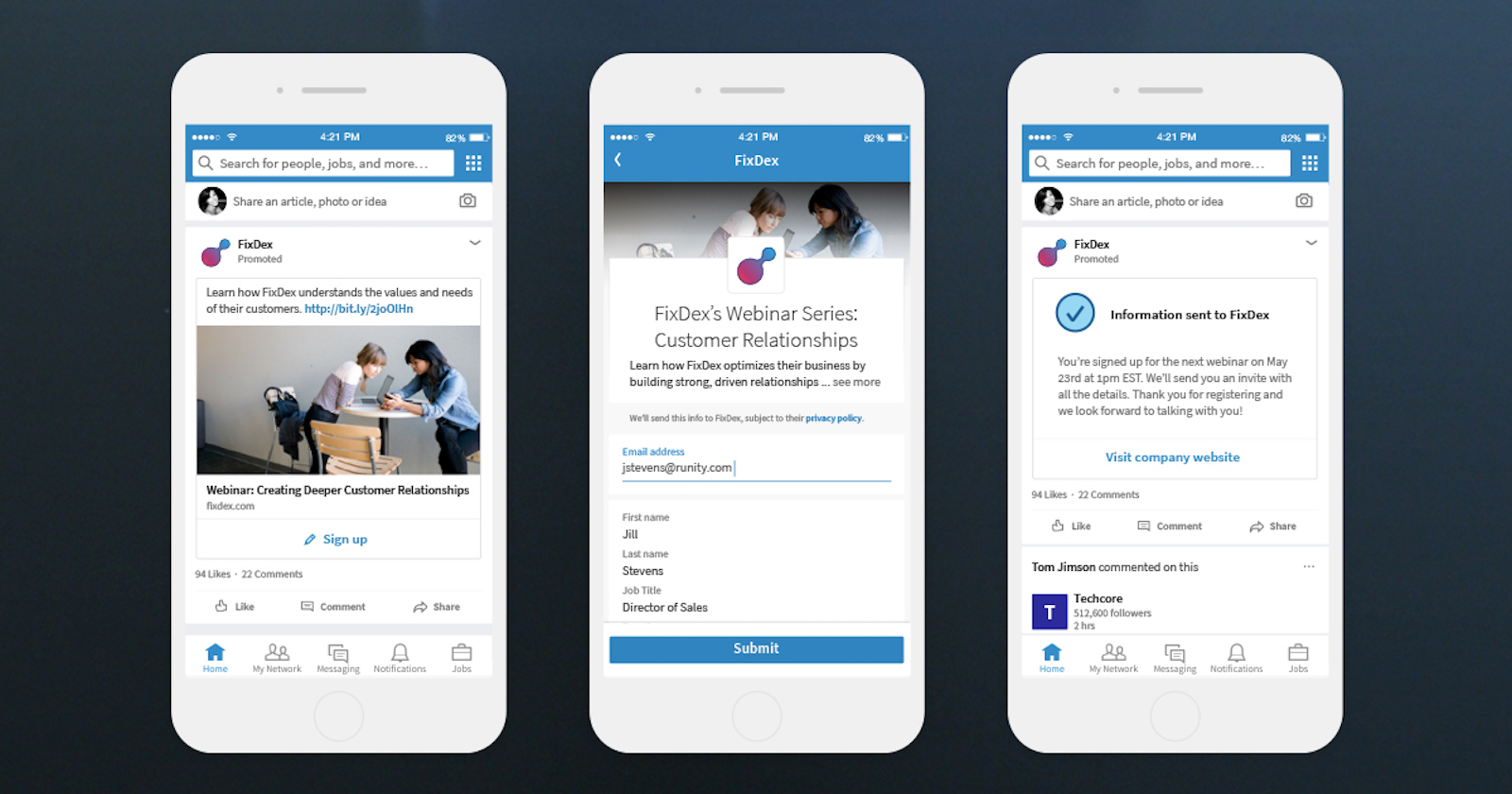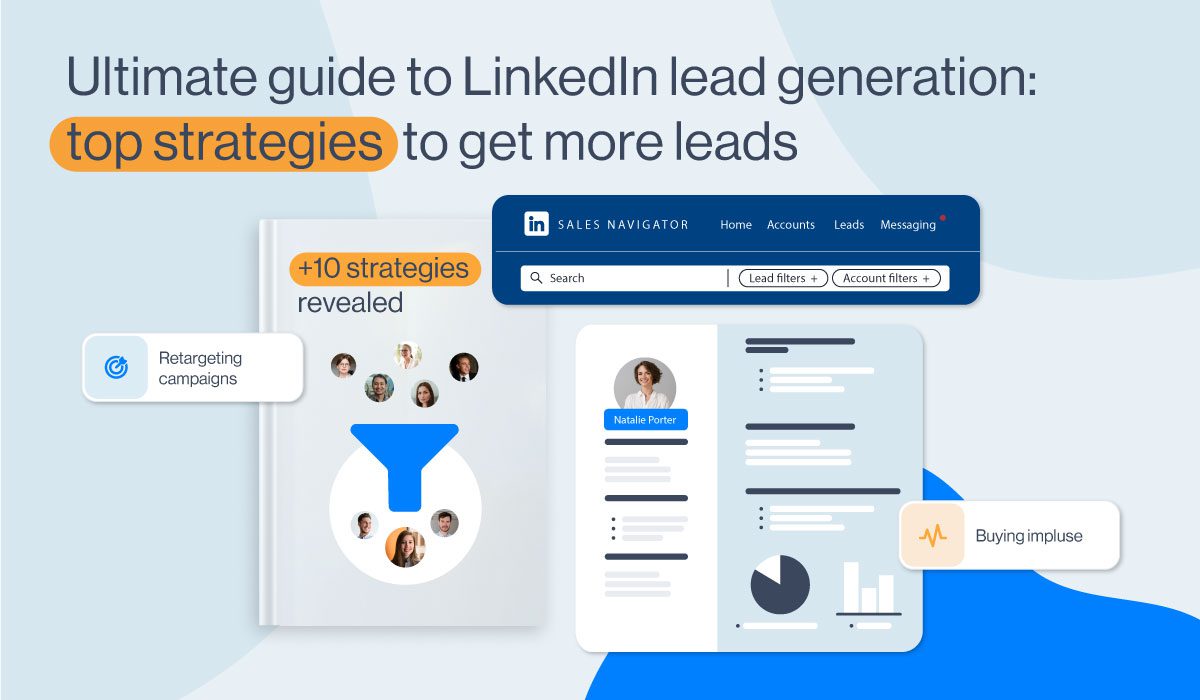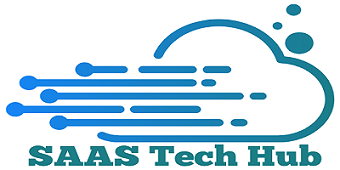Generating leads on LinkedIn is simple but effective. LinkedIn offers unique tools for finding potential clients.
Lead generation on LinkedIn can transform your business. With over 700 million professionals on the platform, LinkedIn is a goldmine for B2B marketing. It allows you to connect directly with decision-makers. Leveraging its tools can help you build meaningful relationships and attract new clients.
Whether you’re new to LinkedIn or have been using it for years, this guide will help you understand the best strategies. You will learn how to optimize your profile, engage with your audience, and use LinkedIn’s features to your advantage. Let’s dive into the world of LinkedIn lead generation and unlock new opportunities for your business.
Introduction To Linkedin Lead Generation
LinkedIn offers unique opportunities for lead generation. This social network is not just for job seekers. It is a goldmine for businesses too. This guide will help you understand how to leverage LinkedIn for lead generation.
Why Linkedin?
LinkedIn is a professional network. It has over 774 million users. These users are professionals from various fields. They are decision-makers. This makes LinkedIn ideal for B2B marketing.
LinkedIn also offers advanced search filters. These filters help you find the right prospects. You can search by industry, job title, and location. This precision saves time and effort.
Benefits Of Linkedin For B2b
LinkedIn helps build credibility. Sharing valuable content establishes you as an expert. This attracts more connections. More connections mean more potential leads.
LinkedIn also offers direct messaging. This feature allows you to reach out personally. Personalized messages have a higher response rate. This makes lead generation more effective.
LinkedIn also supports content sharing. You can share articles, posts, and updates. This keeps your audience engaged. Engaged audiences are more likely to convert into leads.

Credit: www.searchenginejournal.com
Optimizing Your Linkedin Profile
Optimizing your LinkedIn profile is essential for successful lead generation. Your profile is often the first impression potential leads have of you. An optimized profile can build credibility, attract the right audience, and convert prospects into leads.
Profile Picture And Banner
Your profile picture should be professional. Use a high-quality headshot where you are smiling and appear approachable. Avoid using group photos or images with distracting backgrounds.
The banner image is another important aspect. Choose a banner that represents your professional brand. It can include your company logo, a tagline, or an image relevant to your industry. Make sure the banner is visually appealing and aligns with your professional identity.
Crafting A Compelling Headline
Your headline is more than just a job title. It should describe what you do and how you can help. Use keywords relevant to your industry to make your profile searchable. For example, instead of “Sales Manager,” consider “Helping Businesses Grow with Strategic Sales Solutions.”
- Include your unique selling points.
- Use action words to convey energy and enthusiasm.
- Keep it concise and impactful.
Writing An Engaging Summary
The summary section is your opportunity to tell your story. It should highlight your skills, experiences, and what makes you unique. Start with a strong opening sentence to grab attention.
Consider using a mix of short paragraphs and bullet points for readability. Discuss your career achievements, professional values, and how you can add value to potential clients or employers. End with a call to action, inviting readers to connect or learn more about your services.
| Section | Tips |
|---|---|
| Profile Picture | Professional, high-quality, friendly appearance |
| Banner | Visually appealing, aligned with your brand |
| Headline | Descriptive, includes keywords, concise |
| Summary | Storytelling, achievements, call to action |
Building A Targeted Network
Building a targeted network on LinkedIn is crucial for effective lead generation. With the right connections, you can reach out to potential clients. This can lead to meaningful conversations and opportunities. Here are some essential steps to build a targeted network on LinkedIn.
Identifying Your Target Audience
The first step is to identify your target audience. Knowing who you want to connect with is key. This could include potential clients, industry leaders, or anyone relevant to your business. Use LinkedIn’s search filters to narrow down your audience.
| Filter | Description |
|---|---|
| Location | Filter by city, state, or country |
| Industry | Choose from various sectors |
| Company | Filter by specific companies |
| Job Title | Target specific roles or levels |
Sending Connection Requests
Once you have identified your target audience, the next step is sending connection requests. Personalize your message when you send a request. This increases the chance of acceptance. Mention a common interest or a mutual connection.
Here is an example of a personalized connection request:
Hi [Name],
I noticed we share a common interest in [topic]. I would love to connect and share insights on this. Looking forward to connecting!
Best, [Your Name]
Engaging With Connections
Engaging with your connections is vital for building relationships. Like and comment on their posts to show interest. Share valuable content that can help them. Send a message to check in or share industry news.
- Like and comment on their posts
- Share valuable content
- Send messages to check in
Regular engagement keeps you on their radar. This can lead to more opportunities for collaboration or business.
Leveraging Linkedin Groups
LinkedIn Groups offer a powerful platform for lead generation. By joining and actively participating in these groups, you can connect with potential leads and showcase your expertise. This section will guide you on how to leverage LinkedIn Groups effectively.
Joining Relevant Groups
Start by identifying groups that are relevant to your industry or target audience. Use LinkedIn’s search feature to find these groups. Once you find them, request to join. Make sure to read the group rules and understand the group’s dynamics before participating.
| Step | Action |
|---|---|
| 1 | Search for relevant groups using keywords. |
| 2 | Review the group’s description and rules. |
| 3 | Request to join the group. |
Participating In Discussions
Once you’re accepted into a group, start participating in discussions. Reply to posts, ask questions, and share your insights. This helps you build visibility and authority within the group. Engage consistently but avoid self-promotion. Focus on adding value to the conversations.
- Reply thoughtfully to existing discussions.
- Ask questions that spark engagement.
- Share your unique insights.
Sharing Valuable Content
Contribute by sharing valuable content. This could be articles, case studies, or industry reports. Ensure the content is relevant and useful to the group members. Sharing valuable content positions you as a knowledgeable resource, encouraging members to connect with you.
Here are some types of content to share:
- Industry news and updates
- Case studies with actionable insights
- How-to guides and tutorials
By leveraging LinkedIn Groups, you can effectively generate leads. Join the right groups, participate actively, and share valuable content to connect with potential leads.
Creating And Sharing Valuable Content
Creating and sharing valuable content on LinkedIn is crucial for effective lead generation. It helps establish your authority, build trust, and engage your audience. High-quality content attracts potential leads and keeps your network informed and interested. Let’s explore the different aspects of creating and sharing valuable content on LinkedIn.
Types Of Content To Share
Sharing diverse content types is essential to keep your audience engaged. Here are some effective content types:
- Blog Posts: Share insights, tips, and industry news.
- Infographics: Visual content that explains complex ideas simply.
- Case Studies: Showcasing successful projects and results.
- Videos: Engaging and informative clips.
- Whitepapers: In-depth reports on industry topics.
Frequency And Timing
Posting regularly keeps your audience engaged. Here are some tips for frequency and timing:
- Post Frequency: Aim for 3-5 times a week.
- Best Times: Mornings and late afternoons are optimal.
- Consistency: Maintain a consistent posting schedule.
Experiment with different times to see what works best for your audience. Consistency helps in staying top of mind.
Utilizing Linkedin Articles
LinkedIn Articles are a powerful tool for deeper engagement. Here’s how to use them effectively:
- Write In-Depth Content: Cover topics comprehensively.
- Use Subheadings: Break down content for easy reading.
- Include Visuals: Add images or videos to support your points.
- Call to Action: Encourage readers to engage or contact you.
LinkedIn Articles allow you to showcase your expertise and provide valuable information to your audience. They stay on your profile, offering long-term visibility.

Credit: www.linkedin.com
Using Linkedin Sales Navigator
LinkedIn Sales Navigator is a powerful tool for lead generation. It helps you find and connect with potential clients. Sales Navigator offers advanced features to streamline your search and outreach process. This tool is essential for businesses looking to expand their network.
Advanced Search Features
Sales Navigator’s advanced search features let you find leads with precision. You can filter searches by industry, job title, location, and more. This helps you target the right people for your business. These filters save you time and improve your chances of finding quality leads.
Lead Recommendations
Sales Navigator provides tailored lead recommendations. These suggestions are based on your preferences and interactions. This feature helps you discover new potential clients. You can focus on leads that are more likely to convert.
Inmail Messaging
InMail messaging allows you to contact leads directly. You don’t need to be connected to send messages. This feature increases your outreach opportunities. Personalized messages can help you stand out and capture interest. It is a direct way to build relationships with potential clients.
Hosting Linkedin Events And Webinars
Hosting LinkedIn events and webinars is a powerful way to generate leads. These events can help you connect with your audience, showcase your expertise, and build relationships. Here is a step-by-step guide on how to host successful LinkedIn events and webinars.
Planning Your Event
Start by identifying your target audience. Who do you want to attend your event? Knowing your audience helps you tailor your content to their needs.
- Choose a relevant topic that interests your audience.
- Set a clear goal for your event. What do you want to achieve?
- Select a date and time that suits your audience’s schedule.
Next, decide on the format of your event. Will it be a presentation, a Q&A session, or a panel discussion? Choose a format that best delivers your message.
Promoting The Event
Once you have planned your event, it’s time to promote it. Use LinkedIn to spread the word and attract attendees.
- Create an event page on LinkedIn. Include all the details and a compelling description.
- Share the event on your LinkedIn feed. Encourage your team to do the same.
- Send personalized invitations to your connections. Highlight the benefits of attending.
Consider using LinkedIn ads to reach a wider audience. This can help you attract more attendees.
Engaging Attendees
Engaging your attendees during the event is crucial. Keep them interested and involved throughout.
- Start with a warm welcome and introduce the agenda.
- Encourage participation through polls, Q&A sessions, and live chats.
- Use visuals, slides, and videos to make your presentation engaging.
Follow up with attendees after the event. Send them a thank-you message and share the event recording. Ask for feedback to improve future events.

Credit: skylead.io
Analyzing And Measuring Success
Analyzing and measuring success is crucial for effective lead generation on LinkedIn. It helps you understand what works and what needs improvement. Tracking the right metrics, using LinkedIn Analytics, and adjusting your strategy can make all the difference.
Key Metrics To Track
Focus on metrics that show engagement and conversion. These include profile views, connection requests, and message response rates. Monitor the number of leads generated each week. Pay attention to the quality of leads. Are they decision-makers? Track how many leads move to the next stage in your sales funnel.
Using Linkedin Analytics
LinkedIn provides powerful analytics tools. Use them to measure your performance. Check your profile views and post engagements. Look at the demographics of your audience. Are you reaching your target market? Analyze the performance of your posts. Which types get the most engagement? Use this data to refine your content strategy.
Adjusting Your Strategy
Based on your analysis, make necessary adjustments. If engagement is low, try different content types. Experiment with posting times. If your connection requests are not accepted, review your profile. Is it appealing to your target audience? Ensure your messages are clear and concise. Adjust your approach based on feedback. Continuously refine your strategy for better results.
Frequently Asked Questions
What Is Linkedin Lead Generation?
LinkedIn lead generation involves using LinkedIn to identify and attract potential clients. It includes building connections, engaging with content, and utilizing LinkedIn’s tools. This process helps businesses grow by finding and nurturing leads.
How To Optimize Linkedin Profile For Lead Generation?
Optimize your LinkedIn profile by using a professional photo and writing a compelling headline. Ensure your summary highlights your expertise and includes relevant keywords. Regularly share valuable content and engage with your network.
What Are Linkedin Lead Generation Strategies?
Effective LinkedIn lead generation strategies include creating targeted content, joining relevant groups, and using LinkedIn Ads. Engage with your audience through comments and messages to build relationships and trust.
How Can Linkedin Ads Help In Lead Generation?
LinkedIn Ads can help by targeting specific demographics and industries. They allow for precise audience segmentation, increasing the chances of reaching potential leads. Sponsored content and InMail are effective ad formats.
Conclusion
Generating leads on LinkedIn requires strategy and consistency. Start by optimizing your profile. Connect with your target audience. Share valuable content regularly. Engage with your network genuinely. Use LinkedIn’s advanced search to find potential leads. Join and participate in relevant groups.
Utilize LinkedIn Ads for better reach. Track your progress and tweak your approach as needed. Patience and persistence are key. With these tips, you can effectively generate leads on LinkedIn.



Leave a Reply